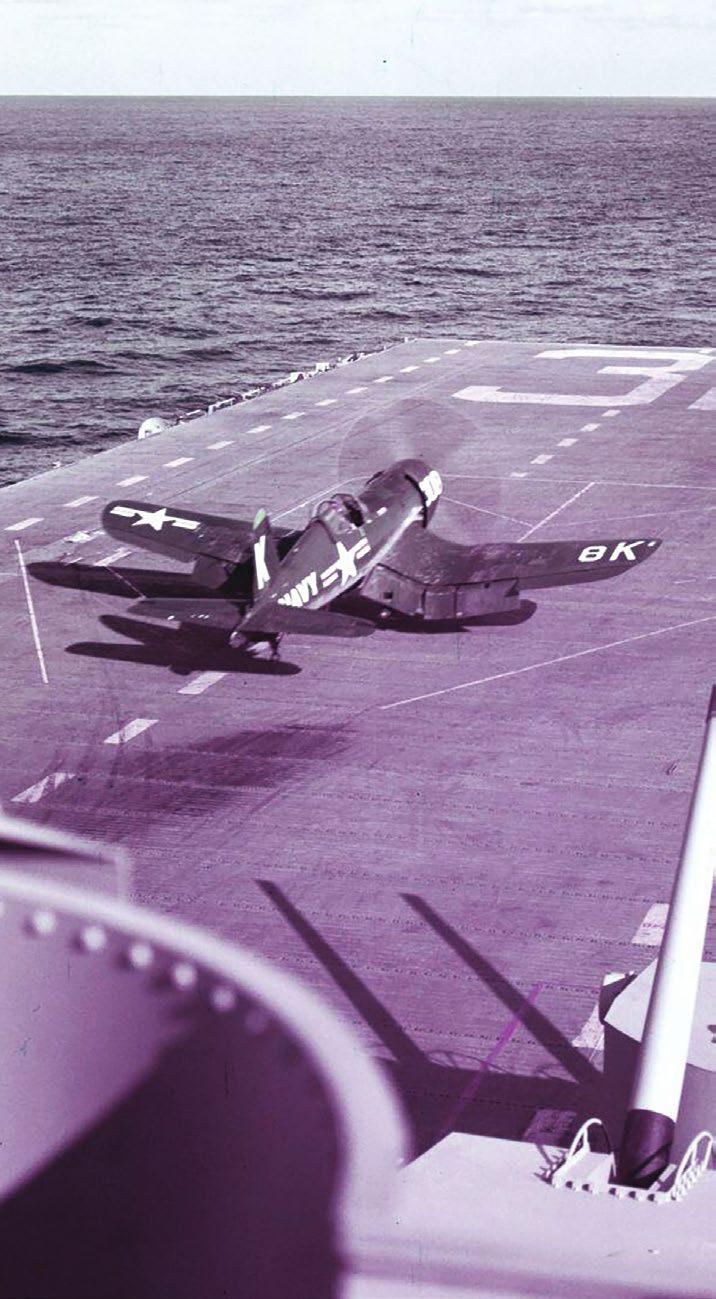Denemek ALTIN - Özgür
THOMAS J HUDNER
History of War
|Issue 142
This US Navy aviator fought a desperate battle against time, flames and the brutal North Korean winter in an attempt to rescue his trapped wingman
-

On 4 December 1950, Thomas J Hudner flew his F4U Corsair over Chosin Reservoir, North Korea, under the early afternoon Sun. Seven other Corsairs and eight Douglas A-1 Skyraiders were with him, conducting a routine armed reconnaissance mission, hunting for enemy troop concentrations and mechanised equipment. Compared to closeair support (CAS) missions, the navy aviators were at relatively low risk. Still, they had to fly at an altitude of just 700ft (210m) to spot Chinese equipment in arctic camouflage, dodging between mountains up to 6,000ft (1800m) high. Reconnaissance missions had gone awry before during the Korean War, with Chinese soldiers, near-impossible to spot set against the deep snow, often firing at passing planes.
Hudner took up a position at the back of a formation of four F4Us. Ahead of his roaring single propeller were Ralph McQueen, Bill Koenig and his close friend and wingman Jesse Brown. At 2.40pm, Koenig’s voice crackled over the radio, warning Brown that he was trailing fuel. Perhaps a Chinese infantryman had taken a lucky shot and ruptured one of his fuel lines. Brown gave the dreaded reply that he was losing power and couldn’t maintain altitude. His Corsair began to sink below the formation and Brown opened his canopy, preparing for a heavy crash landing without power.
The snow was 1.5ft (45cm) deep, but it was powder and provided almost no cushioning. Brown’s aircraft buckled under the heavy impact. The fuselage bent 30 degrees, the engine sheared off and the canopy slammed shut. Smoke rose from the engine’s cowling, filling the cockpit. Circling above, the remaining airmen thought there was no chance Brown had survived, until miraculously he pulled the canopy back open. The pilot was alive but severely injured and trapped in his aircraft 15 miles (24km) behind enemy lines in freezing temperatures.
Bu hikaye History of War dergisinin Issue 142 baskısından alınmıştır.
Binlerce özenle seçilmiş premium hikayeye ve 9.000'den fazla dergi ve gazeteye erişmek için Magzter GOLD'a abone olun.
Zaten abone misiniz? Oturum aç
History of War'den DAHA FAZLA HİKAYE

History of War
FLYING INTO HISTORY ENOLA GAY
The first atomic bomb was dropped on Japan by an American B-29 bomber, preceding the country's capitulation in WWII. Here navigator Theodore Van Kirk recalls his experience of the day that changed history
7 mins
Issue 149

History of War
PUTIN'S SUBMARINE FLEET
From the Cold War to modern operations, the threat beneath the waves has been steadily building, and could be about to escalate
4 mins
Issue 149

History of War
ON SILVER WINGS
THIS MOVING BIOGRAPHY OF AN 'UNKNOWN' WWII RAF FIGHTER ACE CHARTS DESMOND IBBOTSON'S CAREER, THE STORY ENDING WITH A TWIST WHEN HIS REMAINS ARE DISCOVERED IN ITALY IN 2005
2 mins
Issue 149

History of War
CAMBODIA vs THAILAND ROOTS OF THE BORDER WAR
July 2025's clashes are the latest in a long frontier conflict that has gone unresolved, from the era of warrior kings to smart bombs
4 mins
Issue 149

History of War
TASK FORCE GREMLIN
At the end of WWII the Japanese Imperial Army Air Force was conscripted into the Royal Air Force in Southeast Asia
7 mins
Issue 149

History of War
RAF RETURNS TO NUCLEAR
Nearly 30 years after giving them up, the RAF is poised to reacquire air-dropped nuclear weapons
3 mins
Issue 149

History of War
NO MORE NAPOLEONS
A MAGISTERIAL SURVEY OF NAVAL POWER AND POLICY
2 mins
Issue 149

History of War
STALIN'S BLITZKRIEG
In the final month of WWII, the Red Army launched a devastating strike into Manchuria, opening a new front with Japan and threatening invasion of the Home Islands
10 mins
Issue 149

History of War
BALACLAVA POCKET WATCH
This William IV silver timepiece and its owner survived the Charge of the Light Brigade at the Battle of Balaclava
1 mins
Issue 149

History of War
THE END OF THE SPY?
Human intelligence is a dying art, but it is still crucial for security agencies worldwide
3 mins
Issue 149
Listen
Translate
Change font size
